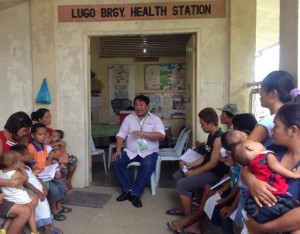The Regional Epidemiology and Surveillance Unit (RESU) in Central Visayas has recorded 84 cases of suspected typhoid fever in Borbon town, north Cebu.
Rennan Cimafranca said they continue to take blood samples and distribute medicine to affected residents in barangays Lugo, Clavera and Cahel.
He said they recorded 46 cases of suspected typhoid fever in these areas last Tuesday and an additional 38 cases yesterday.
During a visit to the water reservoir in barangay Lugo, Cimafranca said they reminded residents to boil water sourced from faucets and deep wells before using it for drinking or cooking.
The reservoir supplies water to the highway areas of barangays Lugo, Cahel and Clavera.
Cimafranca found a pail on top of the reservoir that was half-filled with what appeared to be liquid chlorine. About 200 liters of chlorine were recommended for the reservoir whose storage capacity can last one to two days.
Cimafranca said a water sample from a house nearest to the reservoir yielded negative chlorine content.
“This means that there is no chlorine in the water necessary to make the water clean. I recommend to the local government unit to buy a motorized chlorinator instead of a manual chlorinator,” Cimafranca said. Roland Bucog, Borbon municipal administrator, said they used to have a motorized chlorinator but it was damaged so they resorted to manual chlorination.
Bucog said they will ask the municipal health office to provide them with the list of affected residents to verify if these residents are consumers.
He said most of the residents in the affected barangays use deep wells.
Bucog said they’ve been using their water system for 20 years and this was the first time they encountered a problem.
He said he will have the caretaker of the reservoir investigated to determine if there was negligence on his part.
Dr. Cynthia Genosolango, head of the Integrated Provincial Health Office (IPHO) said they sent a team to Borbon to work with RESU-7.
Genosolango said only the Department of Health (DOH) can declare an outbreak.
“Since the disease is water-borne, contaminated water sources may travel downstream and affect other areas,” she said.
Related Stories:
Typhoid cases up in Borbon town
